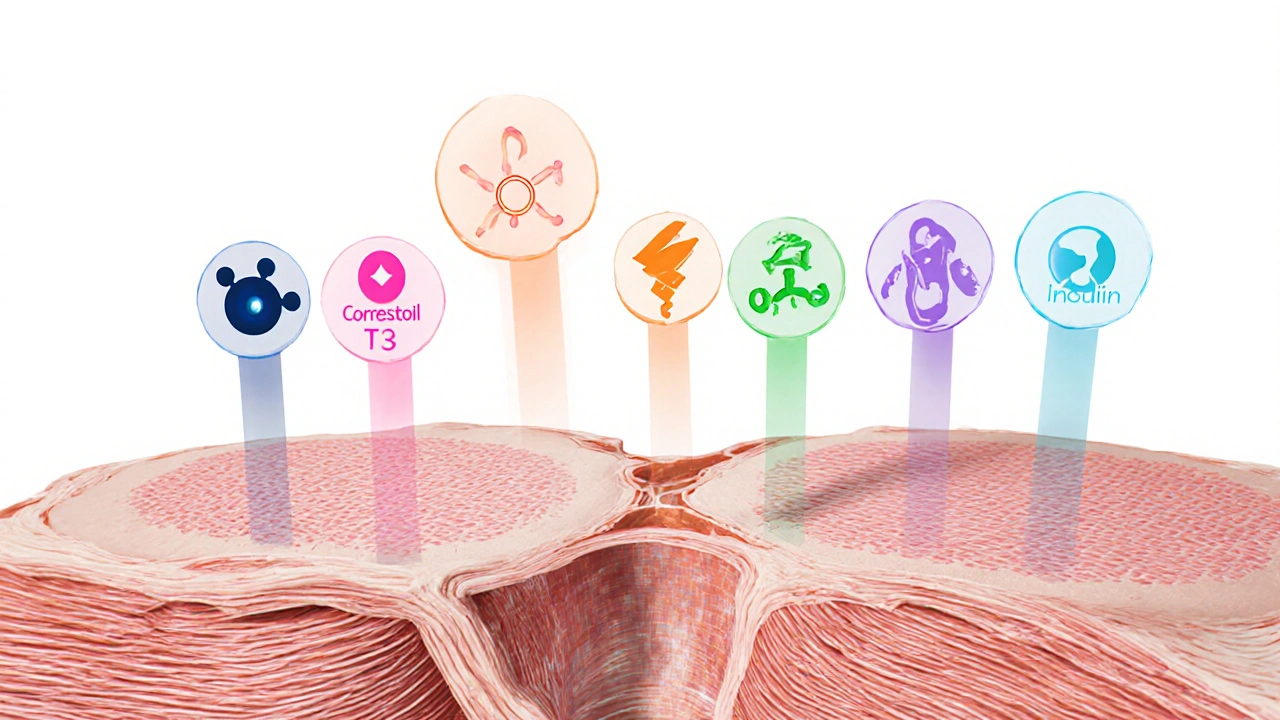Testosterone: Overview, Uses & Health Insights
When talking about testosterone, the primary male sex hormone that drives muscle growth, libido, and red blood cell production. Also known as T, it is a steroid hormone produced mainly in the testes and, in smaller amounts, the adrenal glands. Hormone therapy, medical treatment that adds or modifies hormones to restore balance often uses testosterone to correct low levels, while anabolic steroids, synthetic derivatives that mimic testosterone’s muscle‑building effects are popular in bodybuilding circles. Understanding how these pieces fit together helps you decide what’s right for your body.
Key Topics Covered
First, testosterone deficiency—clinically called hypogonadism, a condition where the body can’t produce enough testosterone—shows up as low energy, reduced sex drive, and loss of muscle mass. The condition is diagnosed with blood tests and treated with either patches, gels, or injections that fall under hormone therapy. Second, many men look for over‑the‑counter testosterone boosters, supplements that claim to raise natural testosterone production. Common ingredients include zinc, vitamin D, and herbal extracts like ashwagandha. While some gain modest benefits, the evidence is mixed, and quality control varies. Third, the role of androgen receptors, cellular proteins that bind testosterone and trigger its effects matters a lot. Even with normal hormone levels, if receptors are blocked or down‑regulated, you won’t see the expected gains in strength or mood. Fourth, safety concerns round out the picture: misuse of anabolic steroids can lead to liver strain, heart issues, and hormonal imbalance, while long‑term hormone therapy may affect fertility and prostate health. Each of these points creates a clear link: testosterone influences muscle growth, testosterone requires proper endocrine regulation, and hormone therapy impacts testosterone levels. Together, they shape how you approach treatment, supplementation, and lifestyle choices.
Practical advice is next. If you suspect low testosterone, start with a doctor‑ordered blood panel. Look for total testosterone below 300 ng/dL as a red flag. For those cleared for therapy, gels applied daily provide steady levels with fewer peaks than injections. If you prefer a supplement route, choose products that list exact dosages of zinc (30 mg) and vitamin D (2000 IU) and avoid proprietary blends that hide ingredients. Remember, diet and sleep also boost natural production—high‑protein meals, regular resistance training, and 7‑9 hours of sleep each night make a noticeable difference. Finally, keep an eye on monitoring. Regular follow‑ups every three to six months let you track hormone levels, lipid profiles, and liver enzymes. Adjustments are common; a dose that worked a year ago might need tweaking now. And if you ever consider anabolic steroids, weigh the short‑term gains against the long‑term health risks and legal issues. By the end of this guide you’ll have a solid grasp of what testosterone does, how hypogonadism is identified, what hormone therapy options exist, and which boosters are worth a try. Below, you’ll find articles that dive deeper into each of these areas—whether you’re looking for detailed medication comparisons, safe buying tips for related drugs, or lifestyle tricks to keep your hormone balance on point.
Explore how hormone imbalances like low testosterone or high cortisol trigger muscle loss, the conditions they cause, and practical steps to restore balance.
Oct, 12 2025

